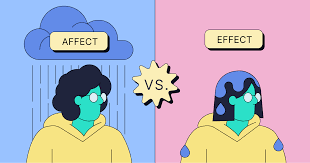The Importance of Sustainable Development
Sustainable development is a crucial concept that seeks to meet the needs of the present without compromising the ability of future generations to meet their own needs. It encompasses economic, social, and environmental considerations to ensure a balanced and equitable approach to progress.
One of the key aspects of sustainable development is environmental conservation. By promoting practices that minimize waste, reduce pollution, and preserve natural resources, we can safeguard our planet for future generations. This includes initiatives such as recycling programs, renewable energy sources, and sustainable agriculture practices.
Furthermore, sustainable development also focuses on social equity and inclusivity. It aims to create opportunities for all members of society to thrive, regardless of their background or circumstances. This involves promoting education, healthcare, and fair employment practices to ensure a more just and equitable world.
Economically, sustainable development encourages responsible growth that benefits both present and future generations. By investing in sustainable industries and technologies, we can create long-term prosperity while minimizing negative impacts on the environment and society.
Ultimately, sustainable development is not just a goal but a mindset that guides our actions towards a more harmonious relationship with the planet and each other. It requires collaboration across sectors and borders to address global challenges such as climate change, poverty, and inequality.
As individuals, we can contribute to sustainable development by making conscious choices in our daily lives – from reducing our carbon footprint to supporting ethical businesses. By working together towards a more sustainable future, we can create a world that is prosperous, inclusive, and resilient for generations to come.
8 Key Benefits of Sustainable Development: Building a Greener, Fairer Future
- Promotes environmental conservation and protection of natural resources.
- Encourages the use of renewable energy sources, reducing reliance on fossil fuels.
- Fosters social equity by providing opportunities for all members of society to thrive.
- Leads to improved public health outcomes through cleaner air and water.
- Creates long-term economic growth by investing in sustainable industries and technologies.
- Helps mitigate climate change by reducing greenhouse gas emissions.
- Enhances community resilience to natural disasters and other challenges.
- Preserves biodiversity and ecosystems for future generations to enjoy.
Challenges of Sustainable Development: Navigating Costs, Efficiency, and Industry Transitions
- Initial costs of implementing sustainable practices can be high for businesses and individuals.
- Transitioning to sustainable technologies may require significant time and resources.
- Some sustainable solutions may not be as efficient or cost-effective as traditional methods in the short term.
- Balancing economic growth with environmental protection can pose challenges for policymakers.
- Certain industries reliant on non-renewable resources may face disruptions in transitioning to sustainable alternatives.
- The complexity of measuring the long-term impact and effectiveness of sustainable development initiatives.
Promotes environmental conservation and protection of natural resources.
Sustainable development plays a vital role in promoting environmental conservation and safeguarding natural resources for future generations. By advocating for responsible practices such as reducing waste, preserving ecosystems, and embracing renewable energy sources, sustainable development helps mitigate the negative impact of human activities on the environment. This proactive approach not only ensures the preservation of biodiversity and ecological balance but also contributes to a healthier planet for all living beings to thrive in.
Encourages the use of renewable energy sources, reducing reliance on fossil fuels.
Encouraging the use of renewable energy sources is a significant pro of sustainable development as it helps reduce our reliance on finite fossil fuels. By harnessing energy from sources such as solar, wind, and hydroelectric power, we not only decrease greenhouse gas emissions but also promote a cleaner and more sustainable energy future. This shift towards renewables not only mitigates the impacts of climate change but also fosters innovation in the energy sector, creating new job opportunities and driving economic growth while preserving our environment for future generations.
Fosters social equity by providing opportunities for all members of society to thrive.
Sustainable development fosters social equity by creating a framework that ensures equal opportunities for all members of society to thrive and succeed. By promoting inclusive policies and practices, sustainable development aims to address disparities and empower marginalized communities, ultimately leading to a more just and equitable world where everyone has the chance to reach their full potential.
Leads to improved public health outcomes through cleaner air and water.
Sustainable development leads to improved public health outcomes by promoting cleaner air and water. By implementing environmentally friendly practices and policies, such as reducing pollution and preserving natural habitats, sustainable development helps to create a healthier environment for communities. Cleaner air and water contribute to lower rates of respiratory illnesses, waterborne diseases, and other health issues, ultimately enhancing the overall well-being of individuals and populations. Emphasizing sustainability not only benefits the planet but also plays a vital role in safeguarding public health for present and future generations.
Creates long-term economic growth by investing in sustainable industries and technologies.
Investing in sustainable industries and technologies as part of sustainable development initiatives not only addresses current environmental challenges but also paves the way for long-term economic growth. By shifting towards sustainable practices, businesses can reduce their reliance on finite resources, minimize waste production, and lower operational costs over time. This transition not only benefits the environment but also creates opportunities for innovation, job creation, and increased competitiveness in the global market. Sustainable economic growth ensures a more stable and resilient economy that can thrive sustainably for generations to come.
Helps mitigate climate change by reducing greenhouse gas emissions.
Sustainable development plays a crucial role in mitigating climate change by effectively reducing greenhouse gas emissions. By promoting practices and technologies that minimize carbon footprints and prioritize renewable energy sources, sustainable development offers a proactive solution to combat the escalating threat of global warming. Through these efforts, we can work towards a more sustainable future where our actions contribute to a healthier planet and a more stable climate for generations to come.
Enhances community resilience to natural disasters and other challenges.
Sustainable development plays a vital role in enhancing community resilience to natural disasters and other challenges by promoting proactive measures that strengthen infrastructure, support systems, and social cohesion. By incorporating sustainable practices such as disaster-resistant construction, early warning systems, and community preparedness programs, communities can better withstand and recover from emergencies. This approach not only minimizes the impact of disasters but also fosters a sense of unity and cooperation among residents, creating a more resilient and adaptive community capable of facing various challenges with greater strength and solidarity.
Preserves biodiversity and ecosystems for future generations to enjoy.
Sustainable development plays a crucial role in preserving biodiversity and ecosystems for the enjoyment of future generations. By implementing practices that protect natural habitats, promote conservation efforts, and mitigate environmental degradation, we ensure that diverse plant and animal species thrive in their natural environments. This proactive approach not only safeguards the beauty and richness of our planet’s ecosystems but also allows upcoming generations to appreciate and benefit from the wonders of nature for years to come.
Initial costs of implementing sustainable practices can be high for businesses and individuals.
The initial costs of implementing sustainable practices can indeed pose a significant challenge for businesses and individuals alike. Transitioning to eco-friendly technologies, investing in renewable energy sources, and adopting sustainable business practices often require substantial financial investments upfront. While these costs may deter some from embracing sustainability, it is important to recognize that the long-term benefits, such as cost savings, improved reputation, and environmental preservation, can outweigh the initial expenses. Finding innovative financing solutions and incentives to support the adoption of sustainable practices can help mitigate the financial burden and pave the way for a more sustainable future.
Transitioning to sustainable technologies may require significant time and resources.
Transitioning to sustainable technologies may present a challenge due to the substantial time and resources required for implementation. Investing in new technologies, infrastructure, and practices that align with sustainability goals can be a costly and time-consuming process. This con of sustainable development highlights the need for careful planning, coordination, and financial commitment to ensure a smooth transition towards a more environmentally friendly and socially responsible future. Despite these challenges, the long-term benefits of adopting sustainable technologies outweigh the initial costs, as they contribute to a healthier planet and improved quality of life for current and future generations.
Some sustainable solutions may not be as efficient or cost-effective as traditional methods in the short term.
While sustainable development offers long-term benefits for the environment and society, one notable drawback is that some sustainable solutions may not be as efficient or cost-effective as traditional methods in the short term. Implementing green technologies or eco-friendly practices often requires upfront investments and changes in infrastructure, which can pose financial challenges for businesses and organizations. Despite the initial higher costs, it is important to consider the broader impact and savings that sustainable solutions can bring over time, such as reduced energy consumption, lower maintenance expenses, and improved public health outcomes. Balancing short-term costs with long-term benefits is a key consideration in advancing sustainable development practices.
Balancing economic growth with environmental protection can pose challenges for policymakers.
Balancing economic growth with environmental protection can pose challenges for policymakers. While striving for sustainable development, policymakers often face the dilemma of promoting economic prosperity without compromising the health of the environment. Decisions that support industries and businesses for economic growth may conflict with measures necessary to protect natural resources and reduce pollution. Finding the right balance requires careful consideration of trade-offs and long-term consequences, as well as innovative solutions that can harmonize economic interests with environmental sustainability goals.
Certain industries reliant on non-renewable resources may face disruptions in transitioning to sustainable alternatives.
Certain industries heavily dependent on non-renewable resources may encounter challenges and disruptions when transitioning to sustainable alternatives. For sectors deeply rooted in fossil fuels or other finite resources, the shift towards sustainable practices could require significant investments in new technologies, infrastructure, and workforce training. This transition process may pose financial burdens and logistical hurdles for these industries, potentially leading to job losses, economic instability, and resistance to change. Balancing the need for sustainability with the realities of these industries’ current structures presents a complex dilemma that requires careful planning and support to ensure a smooth and equitable transition towards a more sustainable future.
The complexity of measuring the long-term impact and effectiveness of sustainable development initiatives.
The complexity of measuring the long-term impact and effectiveness of sustainable development initiatives poses a significant challenge in assessing the true success of such endeavors. Due to the multifaceted nature of sustainable development goals and the interconnectedness of various social, economic, and environmental factors, accurately quantifying the outcomes over extended periods can be inherently intricate. Factors such as evolving global trends, unforeseen external influences, and delayed results make it difficult to gauge the full scope of impact, leading to uncertainties in evaluating the effectiveness of sustainable development efforts in the long run.




